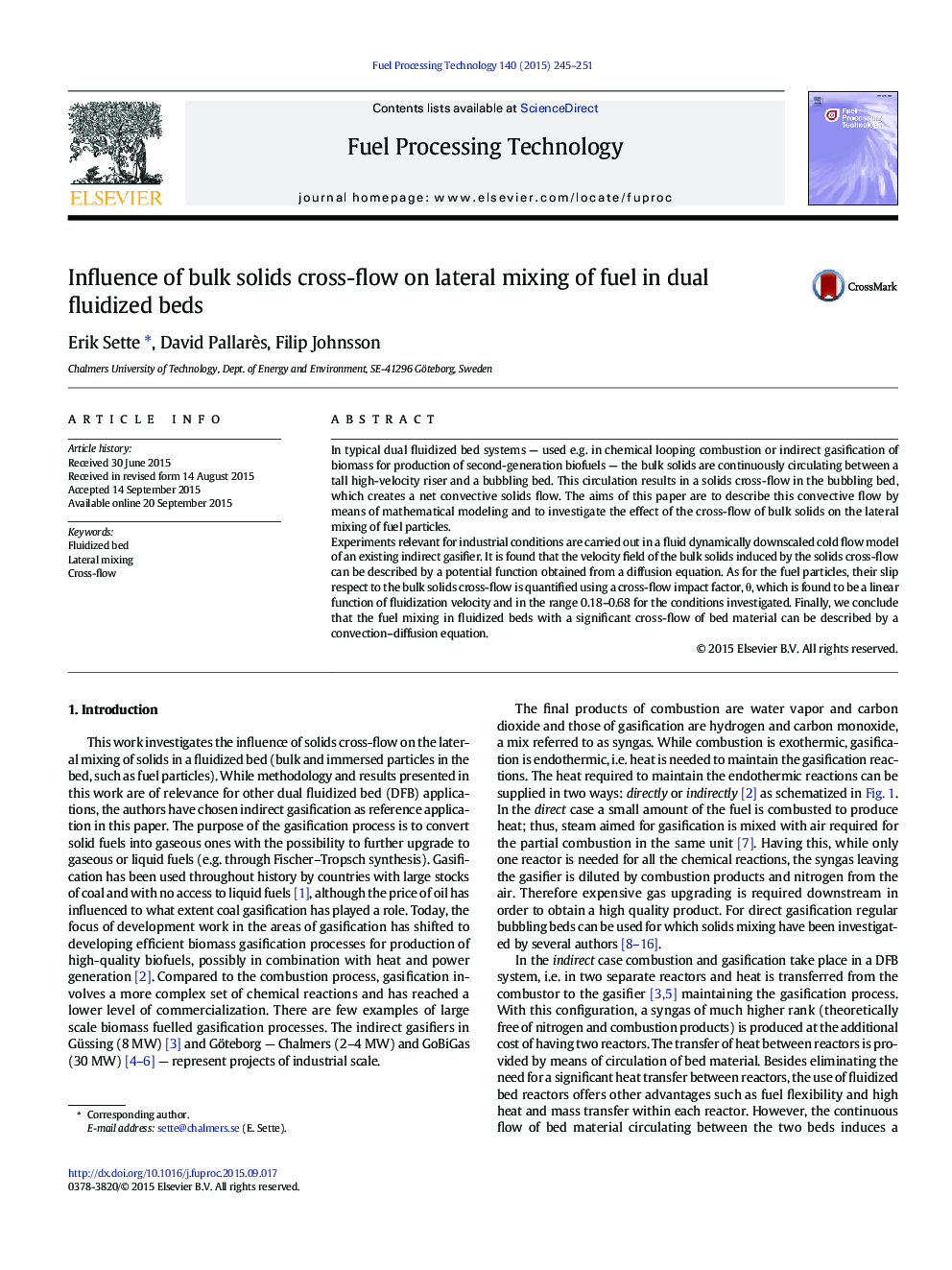| Article ID | Journal | Published Year | Pages | File Type |
|---|---|---|---|---|
| 209322 | Fuel Processing Technology | 2015 | 7 Pages |
•Additional lateral mixing contribution by cross-flow•Convection–diffusion equation describes lateral mixing.•Potential flow theory used in modeling cross-flow•Cross-flow impact factor increases linearly with velocity.
In typical dual fluidized bed systems — used e.g. in chemical looping combustion or indirect gasification of biomass for production of second-generation biofuels — the bulk solids are continuously circulating between a tall high-velocity riser and a bubbling bed. This circulation results in a solids cross-flow in the bubbling bed, which creates a net convective solids flow. The aims of this paper are to describe this convective flow by means of mathematical modeling and to investigate the effect of the cross-flow of bulk solids on the lateral mixing of fuel particles.Experiments relevant for industrial conditions are carried out in a fluid dynamically downscaled cold flow model of an existing indirect gasifier. It is found that the velocity field of the bulk solids induced by the solids cross-flow can be described by a potential function obtained from a diffusion equation. As for the fuel particles, their slip respect to the bulk solids cross-flow is quantified using a cross-flow impact factor, θ, which is found to be a linear function of fluidization velocity and in the range 0.18–0.68 for the conditions investigated. Finally, we conclude that the fuel mixing in fluidized beds with a significant cross-flow of bed material can be described by a convection–diffusion equation.
Graphical abstractFigure optionsDownload full-size imageDownload as PowerPoint slide
